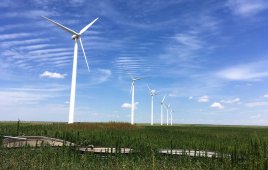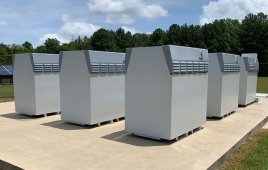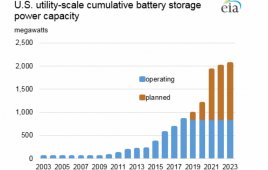Battery Energy Storage Systems (BESS) can be applied to support the grid and help solve these issues created by increased penetration of renewable energy
From a recent ABB newsletter

The increased spotlight on renewable energy makes battery energy storage a practical option, and increasing production of electric vehicles is driving cost improvements that make battery storage a viable solution.
Introduction
In today’s power systems, growing demand, aging infrastructure and, system constraints as well as the increasing renewable energy portfolio, have amplified the need for utilities to find new ways to manage their system and improve reliability. A potential solution is commonly referred to as the “holy grail” of the industry — energy storage. The utility industry does not have a common warehouse or inventory of the product they produce. When a customer turns on a light switch or starts a large industrial motor, the power is consumed immediately from on-line generation.
Until now, it has not been economical to store this power. The increased spotlight on renewable energy makes battery energy storage a practical option, and increasing production of electric vehicles is driving cost improvements that make battery storage a viable solution. Renewable energy is in the political spotlight due to stimulus funding, environmental pressure, and other public policies, and such resources are being integrated into utility grids all over the world. Two of the most prominent types of renewable energy are solar (PV) and wind; however, because the sun disappears behind clouds and the wind fluctuates, renewable power is variable.
BESS renewable energy drivers
In the public eye, integrating renewable energy onto the utility grid may seem like an easy decision. Wind and solar resources are “free”, so it may appear that operating costs are negligible. However, the truth is that the grid operator has many obstacles to overcome, such as:
− State mandated renewable portfolio standards dictate the minimum percentage of generation to be supplied from renewable energy sources. Additionally, the more saturated the grid with renewable energy, the more volatile the energy supply.
− Thermal and hydro generation are designed to operate continuously and deliver consistent power to loads. This is called dispatchable power, meaning the generator can be turned on and off as needed. Wind and solar energy sources are not dispatchable, simply because the wind does not always blow and the sun does not always shine. Figure 1 shows the generation profile of a solar farm on a cloudy day and the variability of the generation capacity.
− Another issue with renewable energy is that typically the generation capacity profile and the demand profile are not aligned. Figure 2 shows the generation profile of a solar farm and the winter demand profile in Florida. The peak load is at 7 am while the peak solar output is at 1 pm, six hours later.
− Because of the two prior issues, base-load plants cycle to “fill in” when needed to support the system. This increases maintenance requirements and emissions and decreases efficiency. Base-load plants were not designed to cycle and be subjected to related thermal stresses
– They are designed with constant output ratings.
− Coal-fired plants are under environmental scrutiny. Older coal plants will be retired rather than benefit from capital spending for new emission control equipment. This eliminates the steady base-load generation on the system.
− Wind and solar sites are not located where power is used and so need extra transmission capacity.
For the rest of this 6 page article: https://goo.gl/jdbFkR
Filed Under: Energy storage




